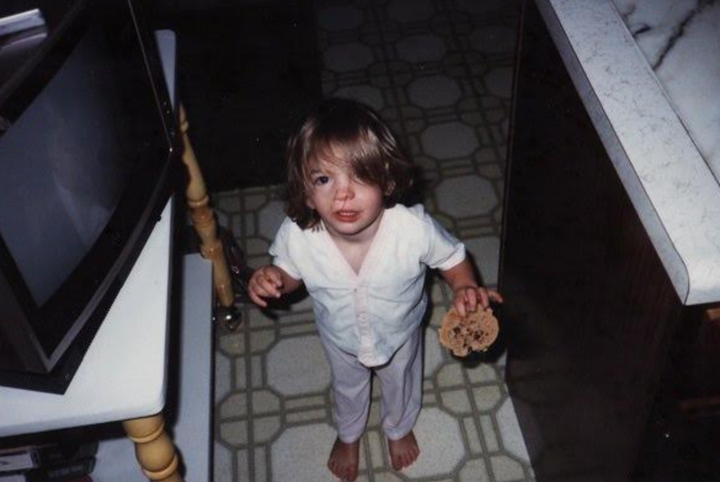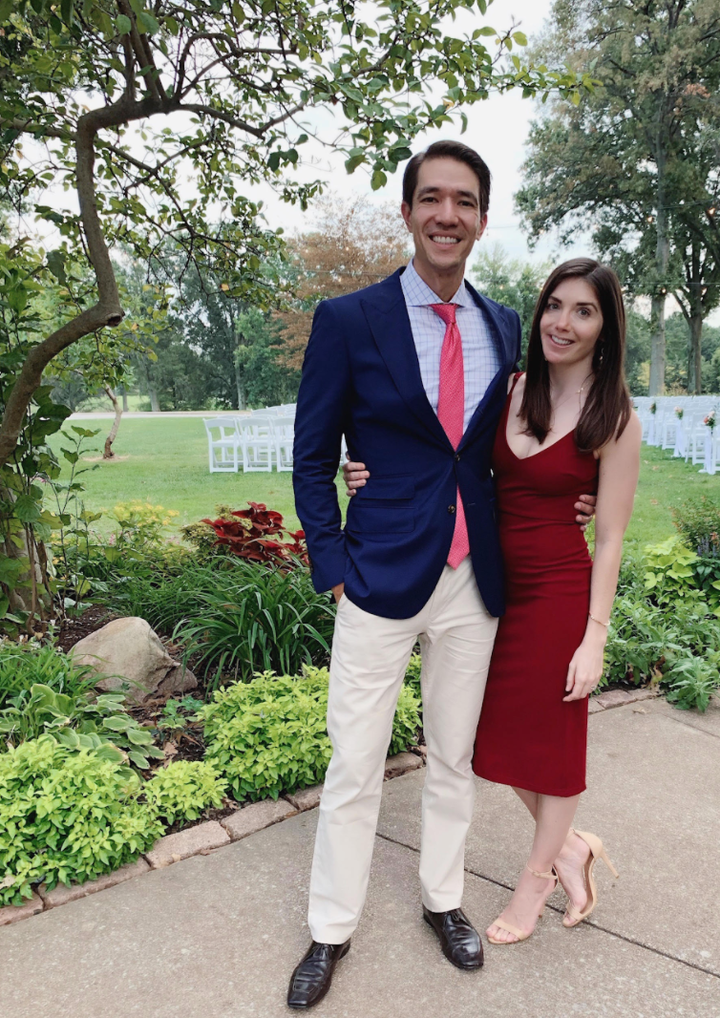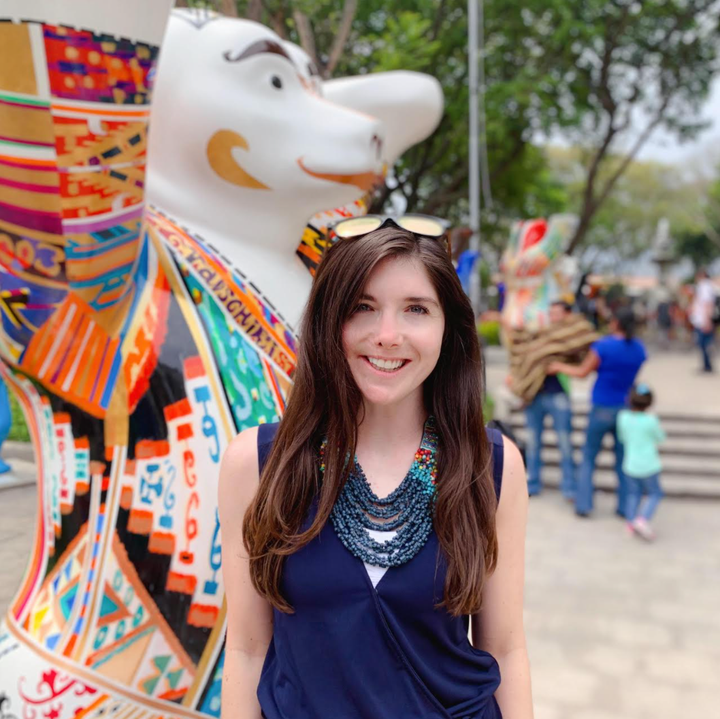Communal meals, at least in the pre-COVID-19 world, are a big part of the medical profession. We share pastries at morning conferences, bond with colleagues over lunch in the hospital cafeteria and attend an endless series of talks where food is usually provided.
To avoid eating in front of peers and superiors would be to exclude myself from an integral part of my profession’s culture and, some days, entirely miss my opportunity to eat. Instead, I make sure I have a stack of napkins at the ready to wipe my runny nose before anyone notices, and I discretely slip away to blow my nose in the bathroom when I’ve finished eating.
I was born with cleft lip, cleft palate and hemifacial microsomia, a constellation of symptoms that, for me, includes a smaller right jaw and missing right ear. In the past few years, my nasolabial fistula, a common complication of cleft lip and palate, has worsened, and there is now a sizable gaping hole connecting my nasal and oral cavities.
Though my fistula is visually imperceptible, food and saliva slowly seep from my nose during meals. While some foods are more problematic than others, and I am selective about what I eat in front of colleagues, it’s an issue I endure at every meal ― and it can only be corrected through an expensive surgical intervention. Depending on who insures me at the time of the procedure, I could be denied insurance coverage for my care, as I have been many times before. This is especially true now that I am an adult.
Insurers routinely deny coverage for the care of patients with congenital diagnoses, including children. The basis for these denials is that the care is deemed not medically necessary by the insurer, despite being recommended by expert health care professionals on the patient’s care team. The underlying reason is that interventions necessary to care for us, including plastic surgery and dental braces, are considered cosmetic when treating the general population, despite being the cornerstone of cleft and craniofacial care.


Insurance companies have done the math and determined it is advantageous to routinely deny coverage and wait for the family or provider to battle that determination, rather than cover what is most certainly medically necessary care.
Although at least 18 states have some type of mandate requiring insurers to cover cleft and craniofacial care, families and adult patients living in states with no mandate are left to grapple with denials. Some of the states only extend the mandate to pediatric patients, which ignores the reality of cleft and craniofacial care as a lifelong need. The Ensuring Lasting Smiles Act (ELSA) is a bipartisan federal bill under consideration in Congress that would mandate insurance coverage of the medically necessary care of adult and pediatric patients with congenital anomalies, thereby putting a definitive end to the coverage denials.
About 120,000 children are born with birth anomalies each year, with cleft lip and palate among the most common. Care for these conditions is interdisciplinary and spans into adulthood. People with cleft lip and palate, like me, undergo a series of surgical and non-surgical interventions as our faces grow. The timing of our procedures is imperative to successful outcomes, and poorly timed interventions can mean a host of problems, including that a person could lose their adult teeth around the area of the cleft.
Coverage denials force families to suffer extreme out-of-pocket costs, risk poor outcomes by delaying care while they contest the denial, or forgo care entirely. My mother recalls denials being the norm rather than the exception for my non-surgical care and nearly 20 surgeries. Though my family managed the out-of-pocket costs while we waited for my provider to argue for coverage, not every family has the means to float such large expenses. Once I reached adulthood, coverage was more limited, and a vast portion of the expenses for the reconstructive surgeries I underwent in college was ultimately paid for by my parents rather than our insurer.

Much of the care for individuals with clefts or craniofacial anomalies is functionally critical, ensuring the ability to eat, breathe, speak, sleep and even swim normally. In addition to surgeries, orthodontic appliances and speech-language therapy are vital to achieving good outcomes in these areas. However, it is important to realize that even interventions aimed at normalizing facial appearance are essential to care; they are not merely cosmetic but are medically necessary for complete psychosocial habilitation.
Individuals with facial differences are discriminated against in education and employment and stigmatized or bullied by members of the communities in which we live and work. We are often perceived as less smart or capable than our peers.
One would be wrong to assume that, with my law degree or role as a medical student at a respected program, I am immune to such discrimination. In fact, I quit my first law job two weeks after starting because one of the partners of the firm pulled me into her office to tell me, in a longwinded speech, that she was worried judges would not take me seriously because of whatever is going on with my face. This was in the midst of the Great Recession, and I spent the next five months unemployed. If I had stayed, I doubt I would have thrived in an environment where so little was expected of me.
Normalizing one’s appearance is not a mere vanity for people with congenital anomalies. Discrimination against people with facial differences can impact not only one’s happiness and self-esteem, but career and financial prospects, as well. Surgeries and orthodontics mitigate that harm.
It is also a common misconception that cleft and craniofacial care end at age 18, perhaps reinforced by the fact that patients graduate from craniofacial team care upon reaching adulthood. One’s face continues to change throughout the aging process, and new complications, like my fistula, can emerge. Moreover, technologies change and improve, and adults should be able to avail themselves of those advancements. For example, when I was a pediatric patient, bone adhered hearing aids (BAHA) did not exist. I am mostly deaf on my right side, but a surgically implanted BAHA would instantly bestow bilateral hearing, enabling me to better hear patients and colleagues calling out to me in busy emergency department environment where I dream of one day working.

Incredible innovations are in the pipeline for patients with facial differences; adults should not be excluded from their life-changing benefits on the basis of age, nor anyone denied coverage due to an inaccurate determination that their care is unnecessary.
ELSA, if enacted, would require that medically necessary care of individuals with congenital anomalies be covered by insurers and would eliminate the problem of routine coverage denials. The language of the statute is ideal in that it explicitly mandates coverage for patients of any age, and it defines medically necessary to mean prescribed by a provider or care team, thereby eliminating the potential for future battles to determine necessity. As a federal solution to a national problem, ELSA will provide long-overdue protections to Americans living with congenital anomalies, ensuring lasting smiles for current and future patients alike.
Kristin Pfeifauf is a medical student at Washington University in St. Louis. Prior to medical school, she practiced transactional law. She completed two years of research fellowship with the Cleft & Craniofacial Institute of Washington University. She is also co-founder and director of LouHealth, a student-run advocacy coalition formed in response to COVID-19. Growing up, she underwent most of her cleft and craniofacial care at St. Louis Children’s Hospital.
Do you have a compelling personal story you’d like to see published on HuffPost? Find out what we’re looking for here and send us a pitch!
Calling all HuffPost superfans!
Sign up for membership to become a founding member and help shape HuffPost’s next chapter
Credit: Source link